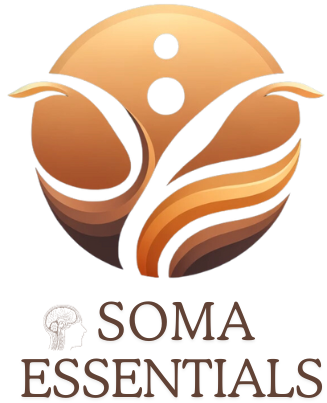Exploring the Power of Body-Centered Therapy for Mind-Body Connection and Well-Being
Welcome to our article on the transformative power of body-centered therapy for mind-body connection and overall well-being. In today’s fast-paced world, many of us are constantly battling stress, anxiety, and other mental health issues. We often neglect the important connection between our mind and body, leading to a disconnection from ourselves and our surroundings. However, with the help of somatic therapy, specifically body-centered therapy, we can tap into the innate wisdom of our bodies to achieve a deeper understanding and balance within ourselves. In this article, we will dive into the concept of body-centered therapy, its benefits, and how it can be a valuable tool in our journey towards optimal mental and physical health. So sit back, relax, and get ready to discover the incredible potential of body-centered therapy.
In recent years, there has been a growing emphasis on the importance of holistic health and well-being. As a result, more and more people are turning to alternative therapies as a means of improving their mind-body connection and overall physical and emotional wellness. One such therapy that has gained popularity is body-centered therapy, also known as somatic therapy.
Somatic therapy is a form of therapy that focuses on the connection between the mind and body. It acknowledges that our thoughts, emotions, and physical sensations are all interconnected and can affect one another. By addressing both the mind and body, somatic therapy aims to help individuals achieve a better understanding of themselves and their bodies.
So, what exactly does body-centered therapy entail? Let’s explore some of the key points that readers searching for information on soma essentials may be interested in learning about.
Somatic Therapy and Exercises for Improving Mind-Body Connection
One of the main goals of somatic therapy is to improve mind-body connection. This involves becoming more aware of our physical sensations, emotions, and thought patterns. By doing so, we can better understand how these different aspects of ourselves interact and affect our overall well-being.
There are various exercises and techniques used in somatic therapy that can help individuals achieve this mind-body connection. For example, one exercise may involve focusing on the sensation of breathing and becoming more aware of how our breath affects our body. Another technique may involve gentle movements or stretches while paying attention to how our body responds.
By regularly practicing these exercises, individuals can become more attuned to their body’s signals and gain a better understanding of how their thoughts and emotions manifest physically.
The Principles and Techniques of Somatic Movement and Healing
In addition to exercises for improving mind-body connection, somatic therapy also utilizes specific principles and techniques for promoting healing and self-discovery. These may include:
- The principle of embodiment: This involves recognizing and honoring the body’s wisdom and using it as a guide for healing.
- The use of movement: Somatic therapy often incorporates movement as a means of releasing tension and promoting emotional and physical well-being.
- The use of touch: Somatic therapists may use gentle touch to help individuals become more aware of their body and its sensations.
Through these principles and techniques, somatic therapy aims to help individuals become more in tune with their body, release physical and emotional blockages, and ultimately promote healing.
Somatic Psychology and Body Awareness
In addition to the physical aspects of somatic therapy, it also incorporates elements of psychology. Somatic psychology focuses on the connection between the body and the mind and how our past experiences can manifest in our physical and emotional well-being.
By becoming more aware of our bodies and how they respond to different stimuli, we can gain insight into our thought patterns and emotions. This can help us identify areas that may need healing or further exploration.
For example, someone who experiences tension or pain in a specific part of their body may uncover underlying emotional issues that need to be addressed. Through somatic therapy, they can work on releasing this tension and promoting overall well-being.
Addressing Misconceptions and Objections
Despite the numerous benefits of somatic therapy, there may be some misconceptions or objections that readers have about this type of therapy. Some people may believe that it is solely focused on the physical body and neglects the mind, while others may be skeptical about its effectiveness.
However, as we have discussed, somatic therapy takes into account both the mind and body and aims to address their interconnectedness. Additionally, there is a growing body of research supporting the effectiveness of somatic therapy in promoting healing and well-being.
Overall, body-centered therapy has much to offer for those seeking to improve their mind-body connection and overall well-being. By incorporating principles and techniques from somatic therapy into our lives, we can gain a deeper understanding of ourselves and our bodies, leading to a more balanced and fulfilling life.
Exercises for Improving Mind-Body Connection
This section will focus on practical exercises that readers can try at home to enhance their mind-body connection. Some examples may include breathing techniques, body scans, and mindful movement exercises.
Somatic Psychology and Self-Discovery
Here, we can explore the field of somatic psychology and its role in helping individuals develop a deeper understanding of their bodies and emotions. We can discuss how somatic therapy can be used to address trauma, anxiety, and other mental health issues.
The Principles of Somatic Therapy
Somatic therapy is based on the belief that the mind and body are interconnected. This means that our physical and emotional well-being are closely linked, and any issues in one area can affect the other. By understanding this connection, somatic therapy aims to address both mental and physical concerns through the body.
One of the core principles of somatic therapy is the belief that our bodies hold emotional memories. This means that past traumas or unresolved emotions can be stored in our bodies, leading to physical symptoms or discomfort. Through somatic therapy, these stored emotions can be released and processed, leading to a better understanding of ourselves and our bodies.
Another important principle of somatic therapy is grounding. This involves being fully present in the body and connected to the present moment. By grounding ourselves, we can become more aware of our physical sensations and emotions, allowing us to better understand and manage them.
In addition, somatic therapy also focuses on tracking sensations. This means paying attention to the physical sensations in the body, such as tension, pain, or discomfort. By tracking these sensations, we can gain insight into the root causes of our physical and emotional issues and work towards resolving them.
Lastly, somatic therapy emphasizes the importance of releasing tension in the body. This can be done through various techniques such as breathing exercises, movement, or massage. By releasing tension, we can reduce physical symptoms and create a sense of relaxation and well-being in both the mind and body.
As we conclude this article, it’s important to emphasize the power of body-centered therapy in improving our overall well-being. From enhancing mind-body connection to promoting self-discovery, somatic therapy offers a holistic approach to healing that can benefit anyone seeking a greater understanding of their body and emotions.

